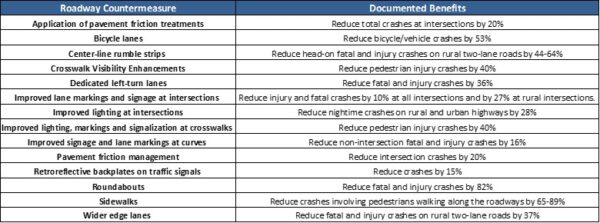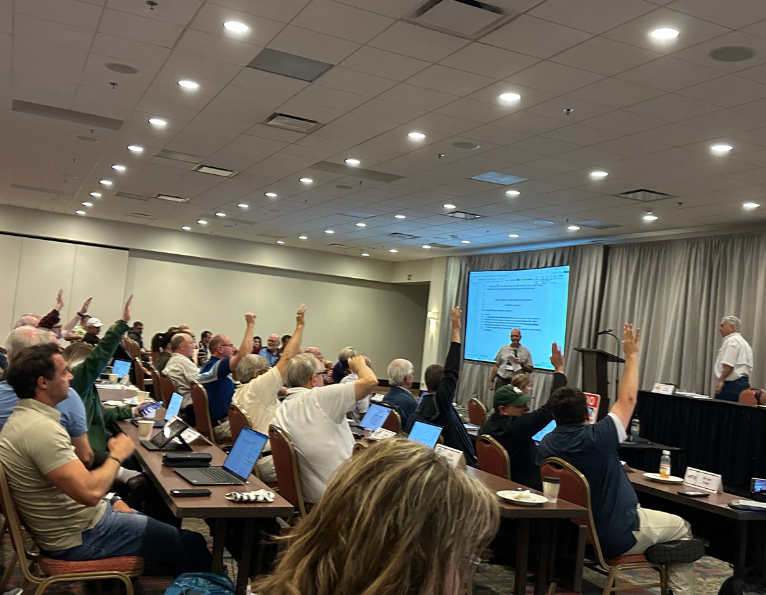TRIP report analyzes ‘traffic safety crisis’ and identifies solutions for improvement
TRIP, a national transportation research nonprofit, today released a report examining the nation’s “traffic safety crisis” over the past decade and delineating a “comprehensive approach” to reducing U.S. traffic fatalities.
The report notes that the number of fatalities on U.S. roads declined the past three years after reaching a high of 43,230 in 2021. However, the number of fatalities in 2022 (42,514), 2023 (40,901), and 2024 (39,345) all exceeded the surge to 39,007 seen in 2020, which was linked to the COVID-19 pandemic.
“This report underscores the urgent need for sustained investment and coordinated action to reverse the troubling trend in traffic fatalities,” said ATSSA Board Chair Mike Hare. “While recent declines are encouraging, the human and economic toll remains far too high. ATSSA remains committed to working with our partners across all levels of government and industry to help forward safety solutions that save lives.”
TRIP’s report, “Addressing America’s Traffic Safety Crisis: Examining the Causes of Increasing U.S. Traffic Fatalities and Identifying Solutions to Improve Traffic Safety,” analyzed traffic fatality figures for all 50 states plus Washington, D.C., from 2014-2024 utilizing National Highway Traffic Safety Administration (NHTSA) and Federal Highway Administration (FHWA) data.
“America faces a roadway safety crisis, with motorist, motorcyclist, pedestrian and bicyclist fatalities in 2024 at a level significantly higher than a decade ago,” the report states. “The tremendous toll of fatalities and serious injuries that occur on the nation’s roadways are a significant economic and, more critically, personal burden on Americans.”
The report shows traffic fatalities increased 20% from 2014-2024 and fatalities per 100 million vehicle miles traveled (VMT) increased 11% in that timeframe.
The report also documented the economic cost of traffic crashes through factors such as medical care, lost productivity, legal and court costs, insurance administrative costs, workplace costs, congestion impacts, emergency services and property damage.
“Based on NHTSA’s traffic crash cost methodology, TRIP estimates that fatal and serious traffic crashes in the U.S. in 2024 caused a total of $1.83 trillion in the value of societal harm, which includes $455 billion in economic costs and $1.38 trillion in quality-of-life costs,” the report states.
The report notes that traffic fatalities saw a significant increase “beginning in March 2020, when initial restrictions due to the COVID-19 pandemic were implemented” even though vehicle travel “decreased dramatically.”
An October 2021 report by NHTSA noted that the significant increase in traffic fatalities that started in March 2020 was “largely related to increased risks being taken by drivers.”
“Of the drivers who remained on the roads, some engaged in riskier behavior, including speeding, failure to wear seat belts, and driving under the influence of alcohol or other drugs,” the report states.
The report references an increase in police-reported alcohol-involved crashes, the number of people not wearing seatbelts, speeding-related crashes and fatalities affected by distracted driving.
“Addressing the nation’s traffic safety challenge will require a comprehensive approach based on a belief that deaths and serious injuries on our roadways are unacceptable, and that people will make mistakes, but those mistakes should not lead to death or serious injury,” the report concludes.
It cites the following three areas as part of the solution to the problem.
- The National Roadway Safety Strategy adopted by the U.S. Department of Transportation (USDOT) in 2022. It focuses on a Safe System approach.
The report included a chart of 13 “Effective Safety Countermeasures” from USDOT.

“Successfully implementing the safe system approach will require complimentary actions by governmental, non-profit, private, healthcare and academic organizations,” the TRIP report notes.
- The TRIP Report also notes the importance of the FHWA Work Zone Management Program and operating with a “comprehensive work zone safety strategy” to address crashes and deaths in roadway work zones, which increased 6% from 2019 to 2023. That comprehensive strategy “includes ensuring a proper work zone layout, prioritizing work zone safety training, ensuring the use of high visibility safety apparel and appropriate traffic control devices, creating an internal traffic control plan and implementing strategies to reduce aggressive driving,” the TRIP report states.
- The final piece of the approach requires increasing investment in roadway safety improvements. The report notes the additional funds directed to this through the Infrastructure Investment & Jobs Act (IIJA) that became law in November 2021 and provided funds over a 5-year period. But the report also noted that inflation has impacted costs and the law expires in September of 2026.
“While it is good news that the number of traffic fatalities is trending downward in recent years, the sharp increase in traffic fatalities over the past decade must be addressed,” said Dave Kearby, TRIP’s executive director. “Making a commitment to eliminating fatal and serious injuries on the nation’s roadways will require robust investment and coordinated activities by transportation and safety-related agencies in providing the needed layers of protection for the nation’s motorists, pedestrians and bicyclists, including safe road users, safe roads, safe vehicles, safe speeds and high-quality post-crash care.”
Published Date
July 23, 2025
Post Type
- News
Topic
- ATSSA News
Related News Articles
July 22, 2025
Registration is now open for Convention 2026
Registration is now open for Convention 2026 Sign up now for ATSSA’s Annual Convention & Traffic Expo Registration is now…
July 1, 2025
ATSSA’s 2025 New Products Rollout Report details the latest ideas for protecting workers, motorists and pedestrians
ATSSA’s 2025 New Products Rollout Report details the latest ideas for protecting workers, motorists and pedestrians NPRO entries offer cutting-edge…
June 25, 2025
NCUTCD Midyear Meeting provides update on MUTCD adoption
NCUTCD Midyear Meeting provides update on MUTCD adoption DES MOINES, Iowa – Eight states have completed the process of adopting…


